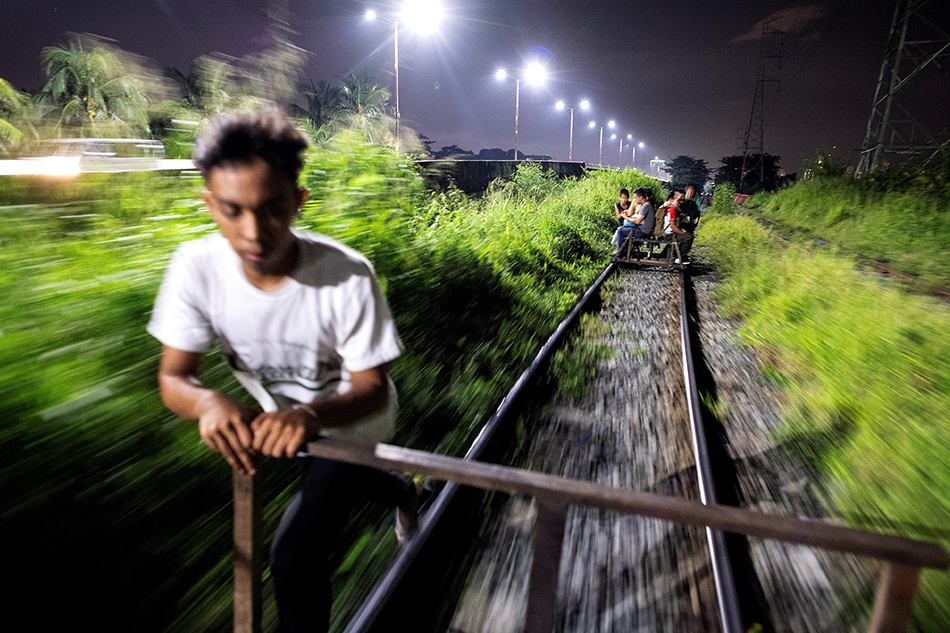Need for speed: Carts on rails help Manila's commuters dodge gridlock
ADVERTISEMENT
Need for speed: Carts on rails help Manila's commuters dodge gridlock
Ronn Bautista,
Reuters
Published Jan 31, 2019 10:30 PM PHT
MANILA - Thousands of commuters flock to Manila's railway tracks every day, but rather than boarding the trains, they climb on to wooden carts pushed along the tracks, to avoid the Philippine capital's infamous traffic gridlock.
The trolleys, as the carts are known, most of them fitted with colourful umbrellas for shade from the sun, can seat up to 10 people each, who pay as little as 20 U.S. cents per ride, cheaper than most train rides.
"I do this because it gives us money that's easy to earn," said Reynaldo Diaz, 40, who is one of more than 100 operators, also known as "trolley boys", who push the carts along the 28-km (17-mile) track, most wearing flimsy flip-flops on their feet.
"It's better than stealing from others," said Diaz, adding that he earned around $10 a day, just enough for his family to get by. A trolley boy since he was 17, he lives in a makeshift shelter beside the track with his two sons.
ADVERTISEMENT
Diaz said the trolley boys were just "borrowing" the track from the Philippine National Railways, but the state-owned train company has moved to halt the trolley service after the media drew attention to its dangers recently.
The risk arises because those pushing and riding the trolleys have to watch out for the trains to avoid collisions.
"Of course we get scared of the trains," said Jun Albeza, 32, who has been a trolley boy for four years after he was laid off from plumbing and construction jobs.
"That's why, whenever we're pushing these trolleys, we always look back, so we can see if there's a train coming. Those in front of us will give us a heads-up too."
When a train approaches, the trolley boys quickly grab the lightweight carts off the track and jump out of the way along with their riders.
ADVERTISEMENT
Still, there have been no fatal accidents since the makeshift service started decades ago, some of the trolley boys told Reuters.
A Manila police officer confirmed that records showed no casualties related to the trolley boys.
"It is really dangerous and should not be allowed, But we understand that it's their livelihood," said the officer, Bryan Silvan.
"They're like mushrooms that just popped up along the tracks and they even have their own association."
When the Philippine National Railways began operation in the 1960s, its network of more than 100 stations extended to provinces outside Manila.
ADVERTISEMENT
But neglect and natural disasters have since caused it to cut back operations by two-thirds, even as the capital's population has ballooned to about 13 million.
For office workers and students, the minutes shaved off daily commutes justify the risks of trolley rides.
"The distance to our workplaces is actually shorter through this route," said one office worker, Charlette Magtrayo. (Reporting and Writing by Ronn Bautista, Editing by Karishma Singh and Clarence Fernandez)
ADVERTISEMENT
ADVERTISEMENT



